我が祖国、汝らの国 My Country ‘Tis of Thy People

1890に起きたウンデット・ニーの虐殺で殺されたスー族 (ラコタ族)のビッグ・フート酋長
Chief Big Foot of the Lakota, killed in the Wounded Knee Massacre of 1890
歴史においてアメリカ大陸の通称の一つは「the New World(新しい世界)」です。この通称の前提となるのは「the Old World (古い世界)から来た者にが大西洋を渡ってこの「新しい世界」を「発見した」ときがその大陸の歴史の始まりであるという解釈です。その解釈はアメリカに生まれて育った拙僧のような人が小中学校で使った教科書の中で濃く染み込まれています。しかし、アメリカ大陸は「無人の新しい世界」どころか、人間史が数万年前に遡る「古い世界」でした。欧州の探検家たちがアメリカに上陸したときすでに豊かで優れた文明を築き上げた「住民」が居ました。つまり「先住民」です。ただし、彼らの物語はアメリカの「正史」において十分い語られることはなく、その歴史からほとんど「抹消された」存在になっています。
“The New World” is one of the names used to describe the Americas in the annals of history. This name implies that the history of that "new world" began when it was discovered by explorers from “the Old World” who crossed the Atlantic Ocean. This interpretation pervades the textbooks that someone like me, born and raised in the US, used in elementary and middle school when they were a child. However, these continents were far from an “uninhabited new world”, but in fact a rather old world with its own human history that stretched back tens of thousands of years. When European explorers landed in the Americas, they found peoples who had built rich and sophisticated civilizations of their own. These peoples are the Native Americans, but today their story is not given its due deserve in the “official history” of the US. In fact, they are largely removed from that tale.
この曲はカナダ生まれの先住民(クリー族)の活動家であるブッフィーセイントマリーが1966年に書いたものです。この曲は先住民の視点から見てきた「もう一つのアメリカの歴史」が描写されています。邦訳は拙僧が作ったものなので不自然な訳はところどころあると思いますが、あくまで歌詞の意味の参考になればと思います。
This song was written in 1966 by Buffy Sainte-Marie, an indigenous (Cree tribe) activist born in Canada. It portrays the other side of American history as seen through the eyes of Native Americans. The Japanese translation is my own, and as such some of the expressions are not 100% natural. I just hope it provides a nice reference for the meaning of the lyrics.
https://www.youtube.com/watch?v=bTqV1pnQoos
My Country ‘Tis of Thy People (1966)
我が祖国、汝らの国
Now that your big eyes have finally opened
Now that you're wondering how must they feel
Meaning them that you've chased across America's movie screens
Now that you're wondering "how can it be real?"
That the ones you've called colourful, noble and proud
In your school propaganda
They starve in their splendor?
You've asked for my comment I simply will render
やっとその大きい目が覚めたよね
ムービースクリーンの片端から片端まで追いかけた彼らは
どのような気持ちでいるのだろうかとついに考えて見る気になった
一体これは真の歴史なんのだろうか?
学校で教わるプロパガンダに置いて個性的で、誇らしく貴くと描かれる彼らが
何故栄光に浴びながら飢えているのか?と疑問に思うあなたに対して
私の答えはこの通りなのさ
My country 'tis of thy people you're dying
我が祖国、汝らの国、汝らが死んでいるよ
Now that the longhouses breed superstition
You force us to send our toddlers away
To your schools where they're taught to despise their traditions
Forbid them their languages, then further say
That American history really began
When Columbus set sail out of Europe, then stress
That the nation of leeches that conquered this land
Are the biggest and bravest and boldest and best
And yet where in your history books is the tale
Of the genocide basic to this country's birth
Of the preachers who lied, how the Bill of Rights failed
How a nation of patriots returned to their earth?
And where will it tell of the Liberty Bell
As it rang with a thud O'er Kinzua mud
And of brave Uncle Sam in Alaska this year?
我らのロングハウス(長屋)は迷信を生み出しているから
我らの幼児をあなた(白人)の学校へ送らなければならんと言い
そこで彼らの言葉が禁止され、自分の伝統と文化を嫌うように仕向けて
航海した時までしか遡らないと教え
その上、この国を征服した寄生虫達こそが一番勇敢で大胆であったと強調する一方
でも、この国の形成に欠かさなかった大量虐殺の話は教科書に載っておらず
嘘をついた牧師の話、憲法の権利章典が我らを守ってくれなかった話
また、愛国者が滅ぼされて土の中に還ってしまった話もね
そして、自由の鐘がキンズアの泥の上になった話と
今年にアラスカ州でアンクルサム(米国の政府の通称)がやったことの話
My country 'tis of thy people you're dying
我が祖国、汝らの国、汝らが死んでいるよ
Hear how the bargain was made for the West
With her shivering children in zero degrees
Blankets for your land, so the treaties attest
Oh well, blankets for land is a bargain indeed
And the blankets were those Uncle Sam had collected
From smallpox-diseased dying soldiers that day
And the tribes were wiped out and the history books censored
A hundred years of your statesmen have felt it's better this way
And yet a few of the conquered have somehow survived
Their blood runs the redder though genes have paled
From the Grand Canyon's caverns to craven sad hills
The wounded, the losers, the robbed sing their tale
From Los Angeles County to upstate New York
The white nation fattens while others grow lean;
Oh the tricked and evicted they know what I mean
さて、西武地方がどんなに安く売り渡されてかとの話をしよう。
氷点下で凍えるその地の先住民の子供たち
交わされた条約は土地と毛布の交換という約束
まあ、土地の代価が数百人分の毛布ならそれはご買得だね
しかも、その毛布はその日(条約が交わした日)でアンクルサムが
天然痘で死ぬ寸前の兵士から集まった物であった
先住民族が全滅され、その後歴史の教科書が検閲された(都合の良いように編集された)
この百年以上そうしたほうが良かろうと考えた為政者がたくさんいった
しかし、征服され抹消されたはず先住民はごくわずかだがなんとか生き残った
遺伝子には白人のものが混ざってしまったけどその血が一層に濃く赤く流れる
グランドキャニオンの洞窟から荒ら果てた悲しい丘まで
負傷者、敗者、全てが奪われた者が自分の物語を歌い語る
ロサンゼルス郡からニューヨーク州の北部まで
白人共が太る一方その他がやつれて行く
だまされて追い出された者は私が言っていることを良くわかっている
My country 'tis of thy people you're dying
我が祖国、汝らの国、汝らが死んでいるよ
The past it just crumbled, the future just threatens;
Our life blood shut up in your chemical tanks
And now here you come, bill of sale in your hands
And surprise in your eyes that we're lacking in thanks
For the blessings of civilization you've brought us
The lessons you've taught us, the ruin you've wrought us
Oh see what our trust in America's brought us
過去が崩れた、未来は恐ろしい存在であり
我らの生命たる血は薬品タンクに納められる
そして、売渡証を手に我らの元へ訪れ
白人のくれた「文明の恵」に対して我らがあまり感謝していないとの驚きがあなたらの目に映る
我らに授けた教訓、そしてもたらした滅び
それこそがアメリカの約束を信じた我らが払った代償なんだ。
My country 'tis of thy people you're dying
我が祖国、汝らの国、汝らが死んでいるよ
Now that the pride of the sires receives charity
Now that we're harmless and safe behind laws
Now that my life's to be known as your heritage
Now that even the graves have been robbed
Now that our own chosen way is a novelty
Hands on our hearts we salute you your victory
Choke on your blue white and scarlet hypocrisy
Pitying the blindness that you've never seen
That the eagles of war whose wings lent you glory
They were never no more than carrion crows
Pushed the wrens from their nest, stole their eggs, changed their story;
The mockingbird sings it, it's all that he knows
"Ah what can I do?" say a powerless few
With a lump in your throat and a tear in your eye
Can't you see that their poverty's profiting you
今は殿様の誇り者が福祉の慈悲に頼っている
今は法制の下で我らは無害かつ危なげがない存在となった
今は我らの命はあなたらの歴史の一部であると教わっており
今は我らの墓地さえが盗掘者に荒らされてしまった
今は我らの伝統的な生き方さえが真新しいものに見えてしまい
手を心の上に載せて、あなたらの勝利を認めてやる
あなたら自分の無知に気づいておらん事実を哀れみつつ
青、白、と赤(アメリカの星条旗の色)で出来上がっているその偽善に咽ぶ(むせぶ)
栄光を与えた戦争の鷲が実は死体を食らうカラスであった
ミソサザイの巣から追い出し、その卵を盗んで、そしてその歴史を変えた
マネシツグミがその歴史を歌い、その歴史しか知らない
「我が何を出来る」と嘆く数人の無力な者
喉が詰まり、目に涙が出そうあなたらに聞くけど
彼らの貧因があなたの富の源となっていると分かっているでしょうか?
My country 'tis of thy people you're dying
我が祖国、汝らの国、汝らが死んでいるよ

カホキアの最盛期を再現した絵です。カホキアは現在イリノイ州南部にあったアメリカ先住民のミシシッピ文明の宗教・政治の中心であって、最盛期の12世紀の人口は1万人を誇って、その貿易網がメキシコまで広がっていました。カホキアの象徴でもあったモンクス・マウンド(塚・古墳)の底面積の大きさでは、エジプトのピラミッドやテオティワカンの太陽のピラミッドを上回ります。
An artist's rendering of Cahokia at its height. Cahokia, located in present-day southern Illinois, was a religious and political center of the Mississippian Culture. It boasted a population of 10,000 at its height, with a trade network stretching all the way to Mexico. The base of Monks' Mound, the symbol of Cahokia, is wider than those of the great pyramids of Egypt and the Pyramid of the Sun in central Mexico.
ありふれた日常に潜む詩情 The Hidden Poetry in the Ordinary
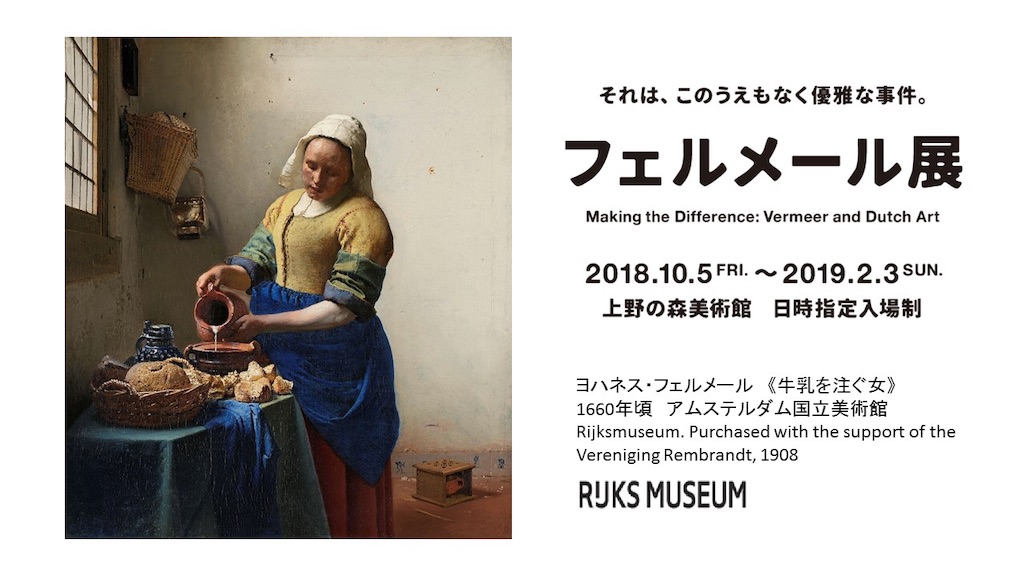
画集に載っているものはある意味で「再現」に過ぎないです。本物を見ると改めてそれを痛感します。友人と一緒に来日中の「フェルメール展 」を観に行ったとき、まさにその思いがしました。本展示会では「光の魔術師 」と称されることもあるヨハネス・フェルメールの僅かの35作品のうちなんと9作が集結され、それと一緒に他の17世紀のオランダの黄金時代の巨匠の傑作も紹介されています。
The works of art we see in book collections are no more than "reproductions". We are painfully reminded of that we see the real thing. This is exactly what I thought when I went to see "Making the Difference: Vermeer and Dutch Art with a friend. This exhibit brings together nine of the mere 35 existing works of Johannes Vermeer, often referred to as the "Master of Light", along with masterpieces from other Dutch painters at work in the Dutch Golden Age of the 17th century.

ハブリエル・メツ―「手紙を読む女」(アイルランド・ナショナル・ギャラリー、ダブリン)
Gabriel Metsu "Woman Reading a Letter" (National Gallery of Ireland, Dublin)

ヨハネス・フェルメール「手紙を書く婦人と召使い」 (アイルランド・ナショナル・ギャラリー、ダブリン)
Johannes Vermeer "Woman Writing a Letter, with Her Maid" (National Gallery of Ireland, Dublin)
「光の魔術師」と称される一方、フェルメールがその光と共に存在する「陰」を巧みに扱え、その「光と陰」の共演でミステリアスな緊張感をたたえた静謐な空間を醸し出しましす。稀にないこの機会でその共演を自分の目で体感し、思わずにその世界にのめり込まれました。カラバッジョと同様に、「光」と「闇」は相互の関係を持っていることを熟知し、その組み合わせを上手く活かします。窓辺から差し込む光に当たるものは照らされると同時に、陰を作ります。「光」と「闇」は表裏一体の存在であることをフェルメールの作品を通して窺えます。ありふれた暮らしの中の深い静寂な瞬間を切り取って、「光」と「陰」が互いを際立たせることによりそこに潜む詩情が見えてきます。
Although he is considered to be the "master of light", Vermeer expertly employs the "shadows" that exist with this light. He takes this collaboration of light and shadow to create tranquil spaces filled with mysterious sense of tension. I took advantage of this rare opportunity to take this in with my own eyes, and found myself completely absorbed in his world. Just like Caravaggio, he truly understood the mutual relationship between light and darkness, and deftly employed the two in his works. The light shining through the window illuminates the objects it hits, while those objects then cast shadows. Vermeer's works show us that the "light" and "dark" are two sides of the same coin. He literally cuts deep moments of tranquility right of the ordinary, accentuating the contrast between "light" and "shadow" in a way that allows us to see the inherent poetry of it all.

ヨハネス・フェルメール 「ワイングラス」(ベルリン国立美術館)
Johannes Vermeer "Wine Glass" (Staaliche Museen zu Berlin)
カメラで撮った写真には確かに現実そのものが映していますが、油彩の作品と比べて何か物足りない気がします。油彩の作品では絵具が厚みと立体感を作り出し、「筆」で描かれることを念頭に置いてみると、些細なことに目が行きます。それはまた芸術の醍醐味でもあります。フェルメールの時代の日本は江戸時代であり、日本来航を許された唯一の欧州勢はフェルメールのオランダでした。もしフェルメールが江戸時代の日本を訪れたらその日常は彼の筆の通してどのように描写されたかを想像するとワクワクします。
Reality is indeed reflected in pictures taken with a camera, but they lack that something we find in oil paintings. The paint adds an extra layer of texture and three-dimensionality, and the fact that we know it was created with a brush causes us to take note of the finer details. That is what makes art so wonderful. Japan was in the Edo Period when Vermeer was alive, and his native Holland was the only European power allowed to call on Japanese ports. The thought of Vermeer coming to Japan during that era and painting the sights he saw fills me with excitement.

ヨハネス・フェルメール 「真珠の首飾りの女」(ベルリン国立美術館)
Johannes Vermeer "Woman with a Pearl Necklace" (Staaliche Museen zu Berlin)
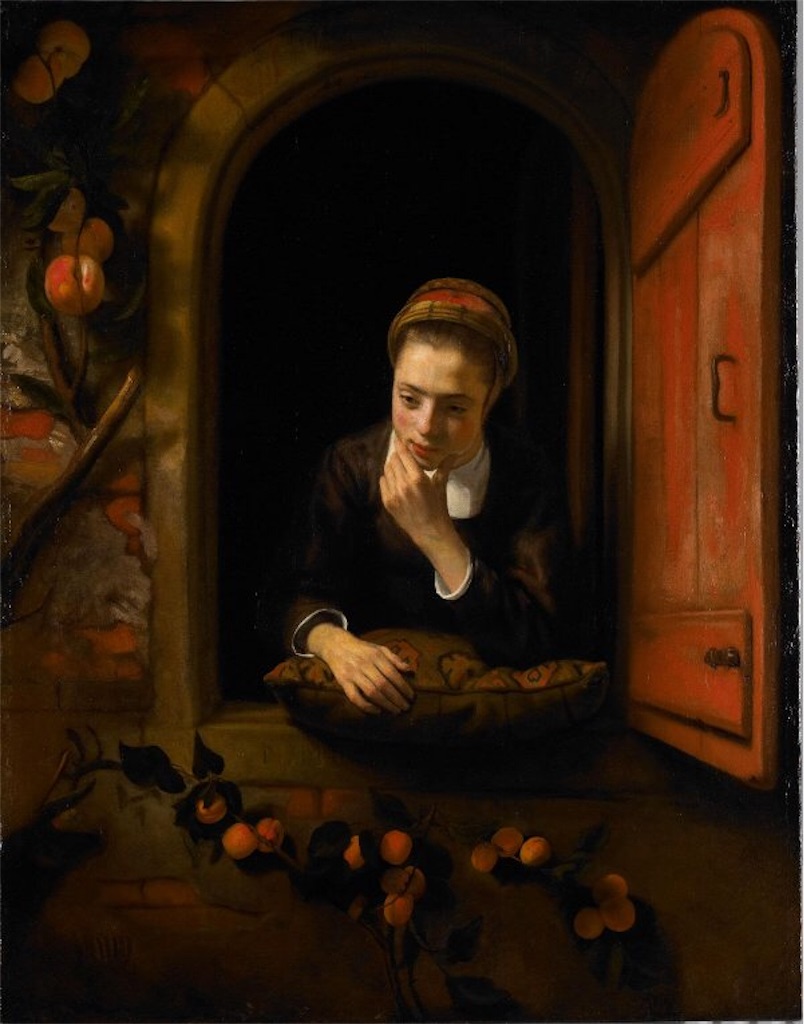
ニコラス・マース「窓辺の少女、または''夢想家''」(アムステルダム国立美術館)
Nicolaes Maes "Girl at a Window, Known as 'The Daydreamer' " (Rijksmuseum, Amsterdam)
ヴィンランドサガに窺える償いの道 Finding the Road to Atonement in the manga ''Vinland Saga''

好評の漫画である「ヴィンランドサガ」の新巻の発売をきっかけにシリーズについて改めて回想する機会としました。11世紀の頭の北欧が舞台となるこの漫画ですが、「償い」というテーマを中心に物語が展開していきます。主人公のトールフィンにとって償いの道を歩むのは苛烈な葛藤でもあります。このテーマを念頭に、この漫画の醍醐味が良く伝わる三つのシーンを選んで拙僧なりの英訳を付け加えて紹介したいと思います(注意:ネタばれ在り)。
The release of the latest installment in the acclaimed manga Vinland Saga has inspired me to go back and reflect on this series. Set in the early 11th century in Northern Europe, the story in this manga focuses on the theme of atonement. The road to atonement proves to be a vicious struggle for Thorfinn, the main protagonist of the series. There are three particular scenes that I feel wonderfully examine this theme and show how great this manga is. I have provided my own translation of the original Japanese below (WARNING: some spoilers)
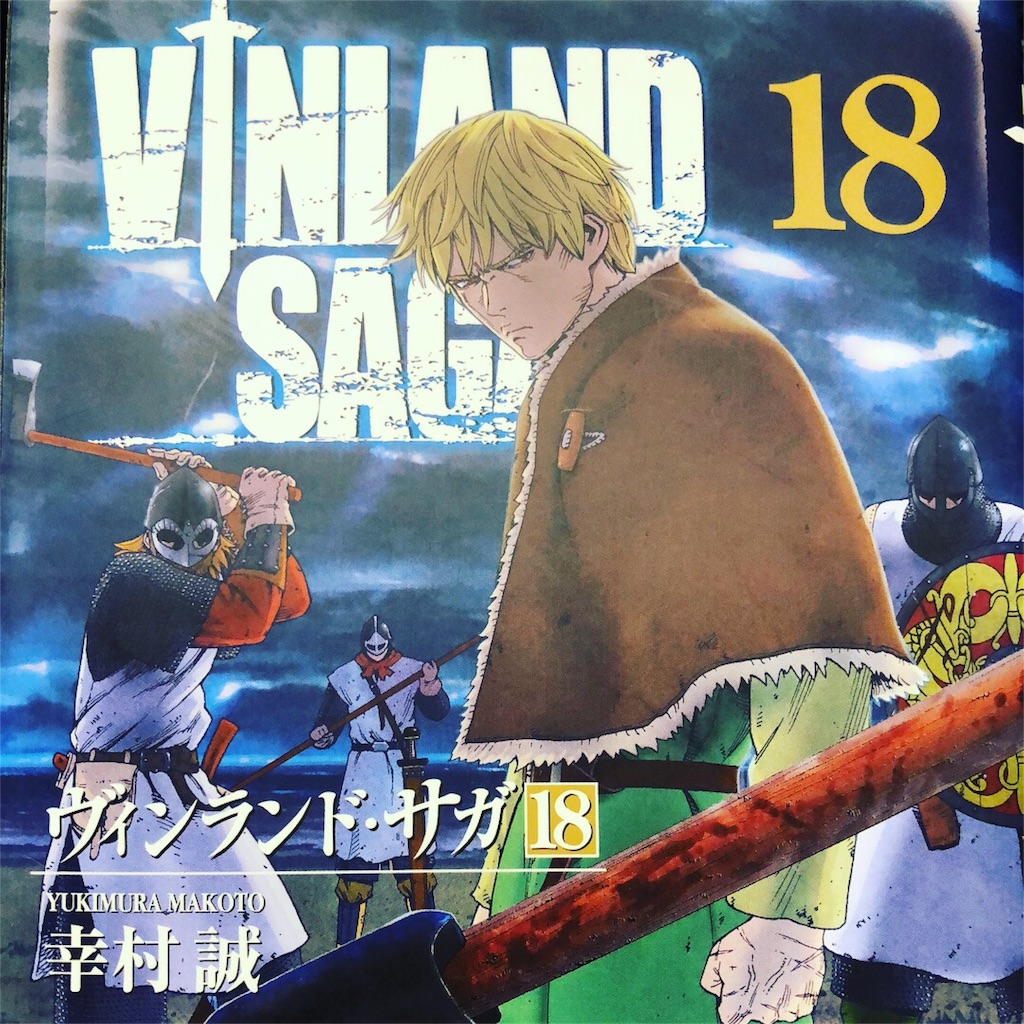
トールフィンのお父さんトールズはかつてヨーム戦士団の4人の大隊長の一人で、「ヨームの戦鬼(トロル)」と呼ばれた冷酷な戦士でした。ただし、戦場とその不毛を倦んで(あぐんで)、自分の戦死を装って家族を連れてアイスランドに逃げました。そこの新天地に根を植えて、「本当の戦士とは何か」の答えを模索しながら戦乱のないアイスランドで家庭を養い、平和に暮らしてきましたが、戦場で生きてきた彼の過去が生んだ因縁は遂に現れ、彼は再び戦場へ向かわざるを得なくなってしまいした。初めて自分の父の戦士の伝説的な功績を知って興奮するトールフィンが父の武器を手にするシーンは非常に印象的でした。そこでトールズがトールフィンに向けて言う言葉を通し て「本当の戦士は何か」と自分が辿り着いた答えを伝えようとします。(日本語はスクリーンショットにありますので、英訳のみの掲載となります。以下は同様です)。
Thorfinn's father is Thors, and he was once one of the four great generals of the Jomsviking army. He was known as the "Troll of Jom" for his ruthless cunning in battle. However, he grew weary of war and the utter futility of it all, and decided to flee to Iceland with his family, faking his own death. Laying roots in his new home, he lives in peace raising his family in a land without war, all the while searching for what it means to be a "true warrior." However, the bad karma from his life on the battlefield eventually rears its head, and once again he must head into the fray. Thorfinn is overwhelmed with excitement upon learning of the legendary exploits of his father, and there is a really impactful scene in which Thors finds him holding the weapons he used in the past. Speaking to his son, Thors attempts to convey the answer at which he arrived (English text below Japanese screenshots; manga screenshots read right to left).

Thors: Tell me, who do you intend to kill with those?
Thorfinn: My... enemies.
Thors: So who are your enemies?
Thorfinn: Ahh... Halfdan???
Thors: Listen Thorfinn... You have no enemies.
That's true for all people. No one has any real enemies.
There's nobody that deserves to be hurt... Not anywhere.
「不戦の誓い」を込めた父の篤い訴えの意味は子供のトールフィンにとって理解し難いものでありました。どうしても「ヨームの戦鬼」の戦いぶりを見たくて、その好奇心に駆り立てて次の日に出航した欧州大陸へ向かう父の船にこっそりと乗り込みます。しかしフェロー諸島でトールズを暗殺するため雇われた傭兵団の待ち伏せに遭い、父はその首領アシェラッドとの決闘で目のまえに殺されました。復讐の炎に包まれたトールフィンはその後アシェラッド兵団に取り付いて、父の仇を打てる日がくるのを待ちます。
Thors's fervent plea was essentially an oath to never to put anyone to his sword again, but it was too difficult for Thorfinn to understand. He was eager to see the "Troll of Jom" go berzerker on the battlefield, and this curiosity drives him to sneak on board his father's ship when it sets out for Europe the following day. However, they are ambushed in the Faroe Islands by a group of mercenaries hired to assassinate Thors. Thorfinn watches as his father is slain before his eyes in his duel with the Asherrad, the leader of the Viking mercenary troop. Thorfinn becomes consumed by a fiery vengeance and attaches himself to Asherrad's band, waiting for the day in which he can avenge his father's death.
アシェラッドは非常に興味深いキャラクターです。トルフィンには仇として命を狙われながらも、彼を手下として使いこなします。ある意味で父親のようにトールフィンの成長を見守って行きます。トールフィンにとってもアシェラッドが父親的な存在に成り、そして自分の父と同じように目の前に殺されてしまいます。死にかけているアシェラッドがトールフィンと最後に交わす会話は心に沁みるシーンです。トールズと同じように、復讐と殺し合いの連鎖で生きていくの不毛さを必死に訴えます。
Asherrad is a truly fascinating character. He takes Thorfinn in and has him work alongside his men, despite knowing that the boy seeks to kill him and avenge his father's death. In a certain respect, we see Asherrad watching over Thorfinn as he grows up much like a father would. The reverse is true for Thorfinn, with Asherrad becoming that fatherly presence in his life... only to be killed right before his very own eyes again. The scene depicting the final conversation between Thorfinn and a dying Asherrad is really touching. He attempts to convey the utter futility of a life of vengeance and ceaseless killing, much as Thors had done.

Thorfinn: Don't you go dying on me! I won't allow it!
Thorfinn: Get up! We have unfinished business to settle! You're mine to kill!
Asherrad: (To himself) This is why you've always been a handful Thorfinn.
Asherrad: (To Thorfinn) Tell me... What did you intend to do with your life after I'm gone?

Asherrad: Haha, you've never thought about that. Goes to show with you.
Thorfinn: Silence! That doesn't concern you...
Asherrad: Life's much more than this... Don't let this vengeful hate continue to hold you back...
Asherrad: Your path lies beyond the world your father found... Go forth, Son of Tors...
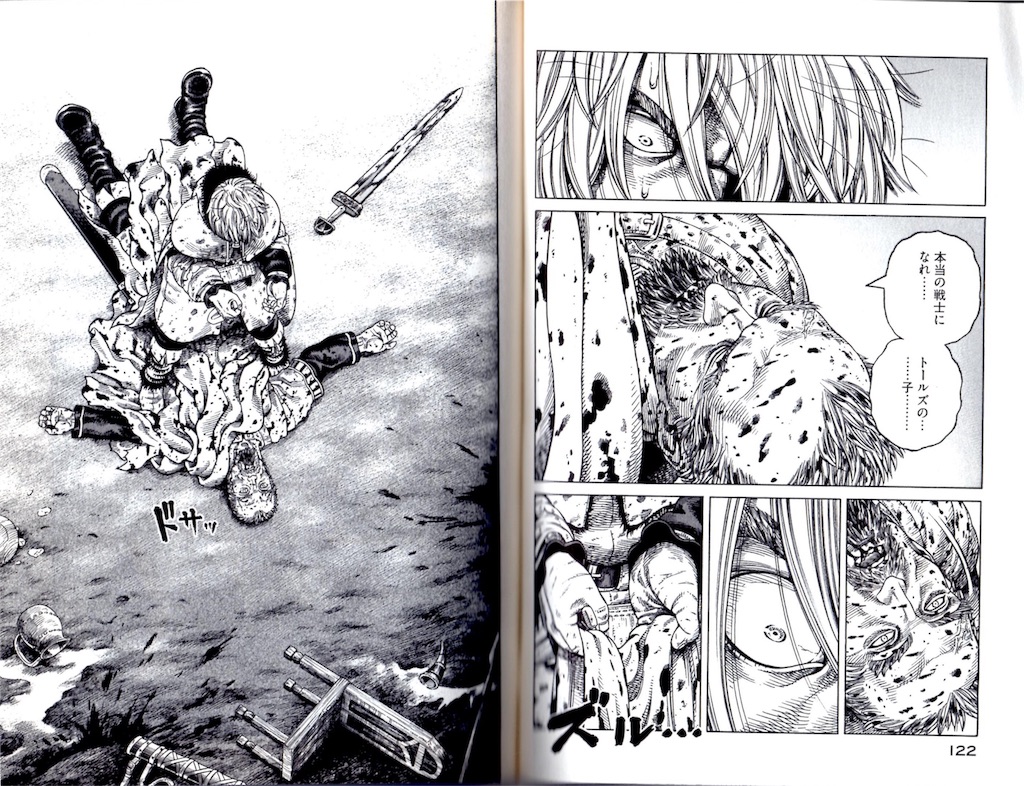
Asherrad: Go and become a true warrior... Son... of... Tors.
アシェラッドの死の後に奴隷身分に落とされ、デンマークのユトランド半島の広大な農場の主に買われ、その森林の開墾の仕事が命じられます。復讐という生きる目的を失い、二十歳頃になる無気力にただ生きていたが、ある日同じく奴隷としてかわれた元農民の青年とエイナルとの出会いによりトールフィンの人生が大きく変わります。共に開墾作業に取り組む生活の中で、エイナルが積極的にトールフィンにはなしをかけて、彼の心を少しずつ開いていきます。それまでの血に染まった人殺しの生き方しか知らなかったトールフィンがエイナルから農業を通して生命を育つ人の命を支える喜びを始めて知ることになります。ただし、彼に包まれている後悔の闇はまだ深く、毎晩に悪夢に苛まれまていました。その悪夢の中に彷徨うトールフィンが遂に暴力との決別を誓い、子供の頃に聞いたヴィンランドという遥か海の向こうの土地を目指し、そこへ世の中から迫害に苦しんだ人々を連れて「戦争も奴隷もない平和な国」を作ることを決意します。その新たな使命を見つけたことをエイナルに打ち明けるシーンはまた印象的です。トールフィンの過去に対する後悔と新な使命を果たしながら少しでうもその罪を償う決心がよく描写されていると思います。
Thorfinn falls into slavery after Asherrad's death and is bought by the owner of a vast farm on the Jutland peninsula in Denmark, where he is charged with clearing the forest for new fields. The next few years of his life Thorfinn simply goes through the motions, having lost the object of revenge that he had made his sole purpose for living. Around the time he turns 20 he meets Einar, a young slave from a family of farmers, and their encounter marks a major turning point in Thorfinn's life. Einar makes an active effort to talk to Thorfinn as they go about their work on the farm, and these conversations help Thorfinn to open up. Until then, he had only known a blood-soaked existence of taking life, but his experience on the farm with Einar shows him the joy of cultivating life that in turn supports the lives of others. However, he still finds himself enveloped by the deep and dark swells of regret, and is assailed by nightmares each and every night. Wandering through this darkness, Thorfinn pledges to completely forsake violence and dedicate his life to helping the oppressed. He aims to take them to Vinland, the land far across the ocean that he heard of as a child, and create a place free of war and slavery. The scene in which he shares this newfound mission with Einar really speaks to the heart. The author does a beautiful job portraying both the remorse Thorfinn feels for his past, and his determination to atone for his sins the best he can by fulfilling this mission.

Einar: But there's people like you Thorfinn. You reject what many consider to be normal and right. Is it that strange to swear not to hurt others?
Thorfinn: At least in Norse society... People label you a coward, and cowards get left out.
Einar: That's not right.
Thorfinn: I've accepted it. There's no helping it. But it's probably best that way if I'm going to carry their burden.
Einar: Who's burden?
Thorfinn: That of the dead.
Thorfinn: I'm visited every night by the souls of those I killed. They torment me. "Why did you kill me," they ask. "How could you kill all these people--fathers, brothers, and sons--knowing the anger and hate you felt when your own father was killed?"

Thorfinn: I have to make my penance with them... taking them to a place where they can rest in peace...
Thorfinn: But I can't take it any more. This burden is too much for me to bear alone.
Einar: Do these dead souls only appear to you? Are other warriors tormented by the spirits of those they killed?

Thorfinn: I can't speak for others. In my case, I began to see them after I became a slave. Maybe we can't see them while we're still warriors.
Einar: I see. I guess it's impossible to see them while people are still warriors.
Thorfinn: It's always on my mind... finding a way to earn their forgiveness.
Thorfinn: Laying down my sword doesn't seem to be enough... That's a given.
Thorfinn: Simply promising to never kill or destroy anything does not suffice as atonement.
Thorfinn: I need to grow more wheat than what I trampled under my feet.
Thorfinn: I need to fix more houses than I burned to the ground.
Thorfinn: I need to do what I can to weed out the death and destruction I sowed with the seeds of life and creation.
ものを破壊するのは容易いであり、それを建て直すのがそれ以上難しいことであります。この投稿の頭で書いた通り、「ヴィンランドサガ」は「償い」というテーマを真剣に吟味する漫画であり、それこの作品の醍醐味であると思います。「完全たる償いは本当に可能のか?」トールフィンの物語のこれからの展開を通してこの答が少しずつ見えてくると願うばかりでいます。
While it's easy to destroy things, building them back up is much harder. Just as I wrote above, Vinland Saga seriously examines the theme of atonement. The beauty of this manga, in my view, lies in its examination of this issue. "Is complete atonement truly possible?" I hope the answer to this compelling question slowly comes to light as Thorfinn's tale continues to unfold.
フォースは法力!?三毒の焔(ほのお)を消すために使われるもの Finding the Force within Buddhism: The Power to Extinguish the Fiery Triumvirate that Poisons the Soul

昨年の12月にエピソード8「最後のジェダイ」の公開に伴って、毎日新聞が「私とスター・ウォーズ」という興味深い特集を掲載しました。その記事で紹介された一人は禅僧の枡野俊明でした。この記事のおかげで枡野氏が著した「スターウォーズ:禅の教え」を知り、年末に購入し一か月ほどに渡り毎日の帰宅電車で少しずつを読み進みました。本書はタイトルの意味通りに、禅語を通してオリジナルトリロジーの名シーンを読み解いていきます。この斬新な視点からスターウォーズを読み直すことにより、多数の新な発見が見えてきました。印象に残った禅語はたくさんありましたが、「終わりに」で展開する僧侶の持論が本書に買う価値を十分与えるではないかと思います。その「終わりに」で書かれたメッセージは本書の醍醐味を見事に伝えているので、下記の通り抜粋し紹介したいと思います。
The Japanese newspaper Mainichi Shinbun ran a special feature last year in December when The Last Jedi was released in which they asked people from different professions to talk about their own connection with the saga. One of the people they interviewed for this article was the Zen priest Shunmei Masuno, and it was through this article that I discovered his book Zen Wisdom from Star Wars. I bought it at the end of the year and spent the next month reading a little of it every day on my train ride home. Just as the title implies, Masuno uses different Zen words to explain famous scenes from the original trilogy. It's a really fresh approach to Star Wars, and one that leads to many new discoveries. There were a number of words that really stuck with me, but the views Masuno conveys in the epilogue make this book one worth buying. This section conveys a great message that encapsulates the essence of the book, so I'd like to share this excerpt here for the reader's enjoyment.

「終わりに」(Epilogue)
「スターウォーズ」には、「フォースと共にあれ」というセリフがジェダイや同盟軍の合言葉のように、幾度となく登場します。「フォース」は他者の心を読み取ったり、操ったり、また敵の攻撃をかわしたり、直接に触れることなくものを動かすことができます。そして、「フォース」は、修行を積んだものだけ操れるものとして描かれます。これらを観て私は「フォース」は「法力」かも知れないと思いました。
The words “May the Force be with you” form the beloved phrase that is uttered countless times throughout the saga by the Jedi and later on members of the Rebel Alliance. Using the Force, individuals can read the minds of others, influence their actions, parry the attacks of an oncoming foe, and move objects without physically touching them. Star Wars shows us that only individuals who have trained diligently are truly capable of wielding the Force. In watching the saga, I can’t help but think that the Force may be a representation of the power of Buddhism.
法力とは、仏法を修行して得られた功徳[H2] の力。法力を使ったという伝説で有名なのは弘法大師空海(日本に真言宗を伝えた僧侶)です。弘法大師が杖をつくと泉が湧き井戸や池となった、といった伝承は今も日本各地に残っています。
The power I speak of is the “force” to do good deeds that is developed by putting Buddhist tenets into practice. There are famous legends of this power being used by Kuukai, the priest who brought esoteric Buddhism to Japan. Tales from regions all over the country speak of fresh springs and wells forming on the ground touched by Kuukai’s staff.
ヨーダは、ルークに対して「フォースとは何か?」と時折、説いていますが、エピソードVでは、「ジェダイの力はフォースから溢れてくる。じゃが、ダークサイドに用心しろ。怒り、恐怖、敵意、これらがフォースのダークサイドじゃ」と教えています。このダークサイドとは、禅で言えば「三毒」です。「三毒」とは、「貪り」、「怒り」、「愚かさ」のこと。ダースベイダーは三毒の象徴でもあるでしょう。
In Episode 5, we see Yoda teach Luke about the nature of the Force on a number of occasions. He tells Luke, “A Jedi’s strength flows through the Force. But beware of the Dark Side. Anger, fear, aggression; the dark side of the Force are they.” In Buddhism, these Dark Side elements are referred to as the “three kleshas that poison the soul”. They are “greed”, “anger”, and “ignorance.” I believe that Darth Vader can be taken as the personification of this triumvirate.

そのダースベイダーである父親を殺すか、ルーク自身がダークサイドに陥るか?ルークは対峙します。しかし、彼は、そのどちらの道を選びませんでした。殺すこともダークサイドに寝返ることもなかったのです。ルークは、父に「善いの心」が残っていることを信じ、欲に駆けられてダークサイドに入ることを選ばず、自分のライトセーバーを投げ捨てました。これは禅の解釈をすれば、父の中にある仏性を信じ、執着を捨て、ライトセーバーを喜捨したと言えます。このようなことを考えるとルークは、三毒の焔を消すために法力であるフォースを使ったのではないでしょうか。
In the original trilogy, Luke found himself faced with a decision: Does he kill his father, or does he give in to the Dark Side. He elected to do neither, refusing to embrace the call of the Dark Side or take the life of his father. He believed that a good heart still lay beneath the veneer of Darth Vader. Thus, he rejects the urges of greed that lead to the Dark Side and tosses aside his lightsaber. From a Zen Buddhist perspective, the act of throwing away his lightsaber can be expressed with the word 喜捨 (kisha, or literally “joyfully throw away/let go). Luke believes in the compassion that dwells within his father, and this motivates him to let go of his attachments by discarding his Jedi weapon. When viewed in this light, the argument could be made that Luke used the Force to rid himself of the three kleshas (poisons) that threatened to taint his soul.
「今」「ここ」にいる自分の本来の姿に出会うことが禅の基本
Discovering your true form in the “here” and “now”: The essence of Zen
「禅」では、過去も未来もなく、現在がすべてと考えます。本書の中でも紹介していますが、「而今(にこん)」という禅語がその考えを端的に表しています。今なすべきことに集中するというのは、禅の生き方そのものなのです。
The present is everything in Zen. There is no past or future. The Zen word “Nikon (而今)” introduced in this book is a straightforward expression of this concept, literally translating to “live in the moment”. That is what Zen is all about: focusing on what you need to do in this moment.

Source: Entre-Labo Corporation
ルークはたびたび、師であるヨーダやオビ=ワンから「今に集中せよ」と教えを受けます。その「而今」をルークが最初に意識したのは、きっとヤヴィンの戦いのときではないでしょうか?ルークはフォースと一体となったオビ=ワンからの声を耳にし、自動照準器を外して肉眼に頼らず、「今」に集中し、見事に初代デス・スターを破壊します。「而今」は、一瞬一瞬の積み重ねが一生をつくり上げていくことを教えてくれますが、まさにルークはこのとき、「今」の大切さを感じたのです。ルークは(将来の)共和国の平和を願い、ジェダイとしての道を歩み始めますが、当初は実現しそうもないように思えた共和国の平和という大きな目標も「而今」の教えに従い、「今」に集中した結果、光明がしてきます。
There are moments throughout the saga in which we see Yoda or Obi-Wan admonish Luke to concentrate on the ''now.'' I feel the first time Luke really became attuned to the meaning of “nikon” was during the Battle of Yavin. Luke hears the voice of Obi-Wan, who had become one with Force, and then turns off his targeting computer and chooses not to rely on his naked eyes, electing instead to focus on the moment. This moment of concentration enables him to blow the first Death Star to smithereens. The word “nikon" imparts an important lesson, teaching us that life is the steady accumulation of each passing moment. I feel in that moment in the Death Star trench was the first time that Luke truly understood how important the “now” is. From there he begins to long for peace in the future Republic and decides to take up the mantle of the Jedi. Such a grand vision seemed impossible to achieve when he sets out on his journey, but by drawing upon this “nikon” tenet and concentrating on the moment, light begins to shine on that end goal.
人は、何かを得てそれを持っていると、失うのが怖くなります。そして、また来てもいない未来を思い、起こりもしないことを心配してしまいがちです。またすでに過ぎてしまっているのに、過去に対して「ああすれば良かった。こうすれば良かった」と後悔しがちです。しかし、未来も過去も現在ではありません。命の真理は「今」にしかありません。ですから、今やれること、やるべきことを精一杯行う。そうすれば、いくつもの点が繋がって、やがて人生という線になります。
Human beings fear losing that which we gain and hold onto. We also cast our thoughts to a future that has not yet come, and fret about things that have yet to come to pass. At the same time, all too often we reflect back on things in the past, tinged with regret over perhaps what we should have done. We must remind ourselves that neither the past nor future are part of the “here and now.” The underlying tenet of life is the “now.” That’s why we need to give our all in what we are doing in this instant. This continuous effort connects the figurative dots of each instance to form the line we know as life.

黙想するクワイ・ガン・ジン (エピソード1より) Qui Gon Jinn meditates (From Episode 1)
心の在り方を極めていくのが「禅」です。「禅語」は、その修行を通して会得した心を言葉にしたもの。現代に生きる人々は、時間に追われて余裕を失い、豊かな時間と空間を過ごすことが出来にくいストレス社会にいます。であるからこそ、心を静かに整えることが大切です。本書を片手に、そのようなひと時を皆さんが持ってくださったら、こんなに嬉しいことはありません。
Zen is all about refining our mind and heart. The Zen words conveyed in this book are an expression of the understanding and mind we gain through the application of these tenets. We live in a society seemingly controlled by stress, always hounded by the clock and struggling to find ample time and space to enjoy what we have. That is why it is so important to take a moment to still our mind and soul. Nothing would please me more than knowing this book helps to create those moments for you.
枡野俊明
Shunmei Masuno
日本庭園と盆栽苑を巡るTraipsing around a Japanese Garden and Bonsai Exhibit

今週は休みを取って、日本庭園を見たい来日中のお馴染み友人を昭和記念公園 へ連れて行きました。拙僧は何回もそこへ訪れたこともありますが、公園の奥の方にある日本庭園まで足を運んだことはなかったので、拙僧は非常に楽しみにしていました。そこでは#盆栽苑 というところもあって、梅雨らしいの天候で誰もいなかったですが、そのしとしととした雨は敢えて憩いの効果もあって、すこぶる落ち着いた雰囲気を醸し出していました。また、樹の葉っぱに付着した雨の雫はその緑の度合い一層に鮮やかにして、まるでその色の光を放っていたようにも見えました。そこで働く庭師(らしい)方が #盆栽の基本、醍醐味、見方を詳しく説明して頂いたおかげで、今まで垣間見ることが出来なかった盆栽の小さい宇宙の中で繰り広げる偉大な世界観を堪能できました。
This week I had some time off to take lifelong friends from back home visiting Japan to Showa Kinen Park to see a Japanese garden, something they were eager to check out. I had visited that park many times before, but I had never ventured to the back to see the Japanese garden there, so I was also really excited to see it. They had a bonsai garden, and with the weather typical fare for the rainy season there was no one else there to enjoy it. The soft mist falling had a rather soothing effect, creating an extremely relaxing atmosphere. The drops of rain resting on the leaves of the trees made the hues of green even more vivid, as if they were giving off a green light of their own. We were approached by (what appeared to be) the gardener that worked there, and he provided us with an detailed explanation about the fundamental elements of #bonsai, their essence, and things to keep in mind when viewing them. Thanks to this great lesson, I was able to enjoy the worldview of the tiny universe that unfurls within each bonsai creation, something I was never able to do before.

盆栽は基本的にで三要素で成り立っています。(1) #根張り: 盆栽の根が四方八方に張り出して、安定感と力強さがあること。(2) #幹: 立ち上がりが素直で、上に行くほど自然に細かくなっていくこと。(3) #枝配り: 幹から出ている枝の太さや間隔がバランスよく配置されていること。これからの要素を兼ね備えたものが理想的とされています。盆栽の楽しみ方は人それぞれです。ある作品の一つは一人から見れば流れる滝に見える一方、また別の人から見れば上る煙や寄せる波にも見えます。何よりは、一つ一つの盆栽に大きいな自然の景色の広がりを感じることが盆栽の醍醐味であると言えます。
A bonsai creation is comprised of primarily three elements. (1) #Nehari: This refers to the roots spreading out in all directions from the base, creating a sense of both stability and strength. (2) #Miki: This describes the stem rising up unfettered, naturally growing smaller and more concise as it stretches higher. (3) #EdaKubari: This refers to the branches extending out from the main stem, with the varying thickness and space between them achieving a fine balance. The ideal bonsai tree features a combination of these three elements. The way in which each tree is viewed varies by person. In the eyes of one person, a bonsai tree can resemble a waterfall, while to another it resembles a plume of smoke rising or a wave lapping up on the shore. The most important thing is that each bonsai work delivers the essence of the art, which is simulating the grandeur of nature on a smaller scale.

数多くの作品の中から特に気に入ったものを挙げようとすると、幹の一部が白くなっている盆栽でしょう。樹齢300年の直幹という種類の一本の盆栽が非常に気になって、それは何故なのか最初わからなかったけど、庭師の説明を聞いてからその一本の盆栽の魅力とその作品に織り込めた演出がくっきり見えるようになりました。その白い部分は実は幹の枯れている部分であり、それを残すことで自然の厳しさを演出していると言われました。また、その枯れた幹の白色部分とと若々しい葉の緑色部分の美しい対照を際立たせ、「死」と「生」が表裏一体であることを表せ、栄枯盛衰その意味も体現しています。この諸行無常は日本の審美であります。
If I had to pick which type of bonsai I liked out of all the works on display, the pieces that really caught my eye were ones in which part of the stem was white. There was one piece of the "chokkan (straight stem)" variety that I liked a lot, and that tree was around 300 years old. At first I couldn't quite place why I liked that particular piece, but after listening to the gardener's explanation I was able to see the charm of this tree and form of expression imbued within it. According to the gardener, the white portion is actually the withered part of the trunk, and by leaving it within the piece the artist was able to convey the stark and severe face of nature. At the same time, the white portion of the trunk and the green of the fresh young leaves create a beautiful contrast, reminding us that "death" and "life" are inseparable. In short, this tree symbolizes the ebb and flow of life. That transience is the essence of the Japanese aesthetic.

印象派に窺える般若心経 Buddhist Undertones to Impressionism
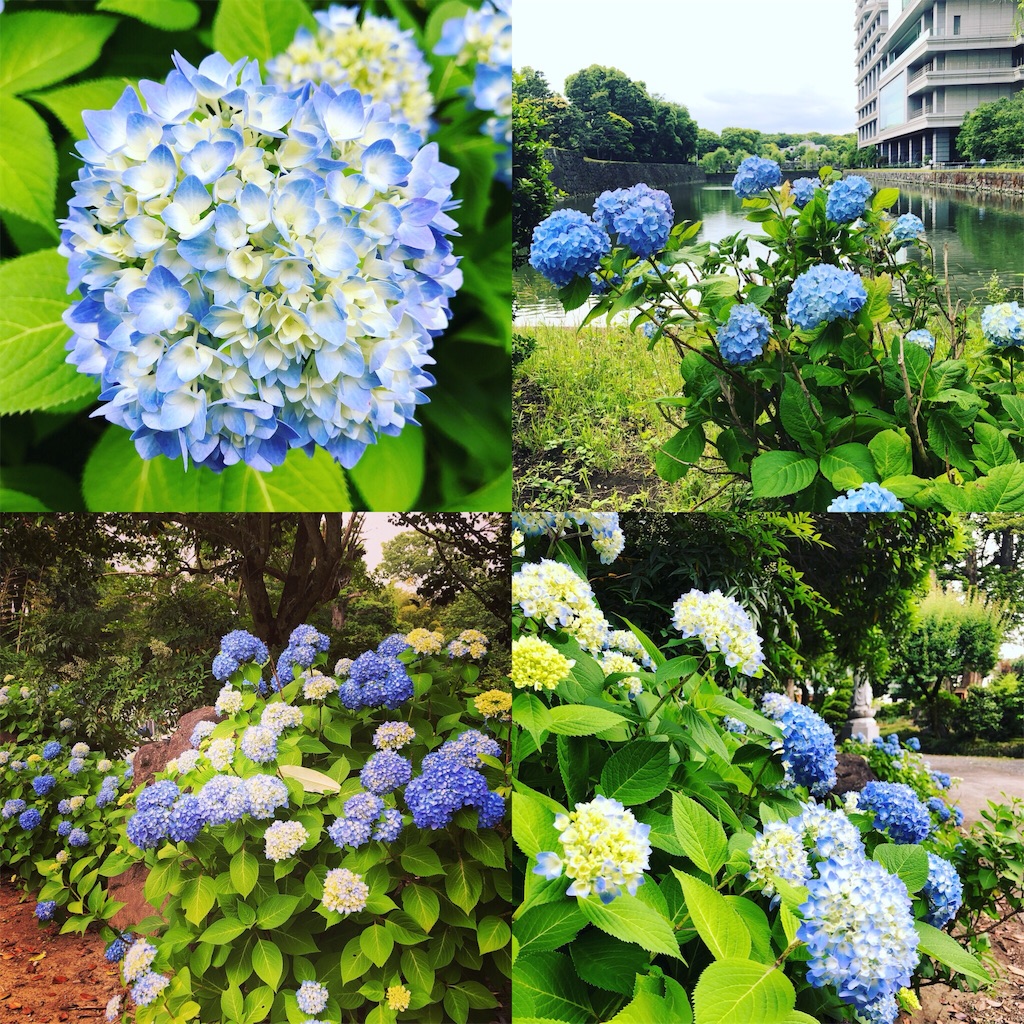
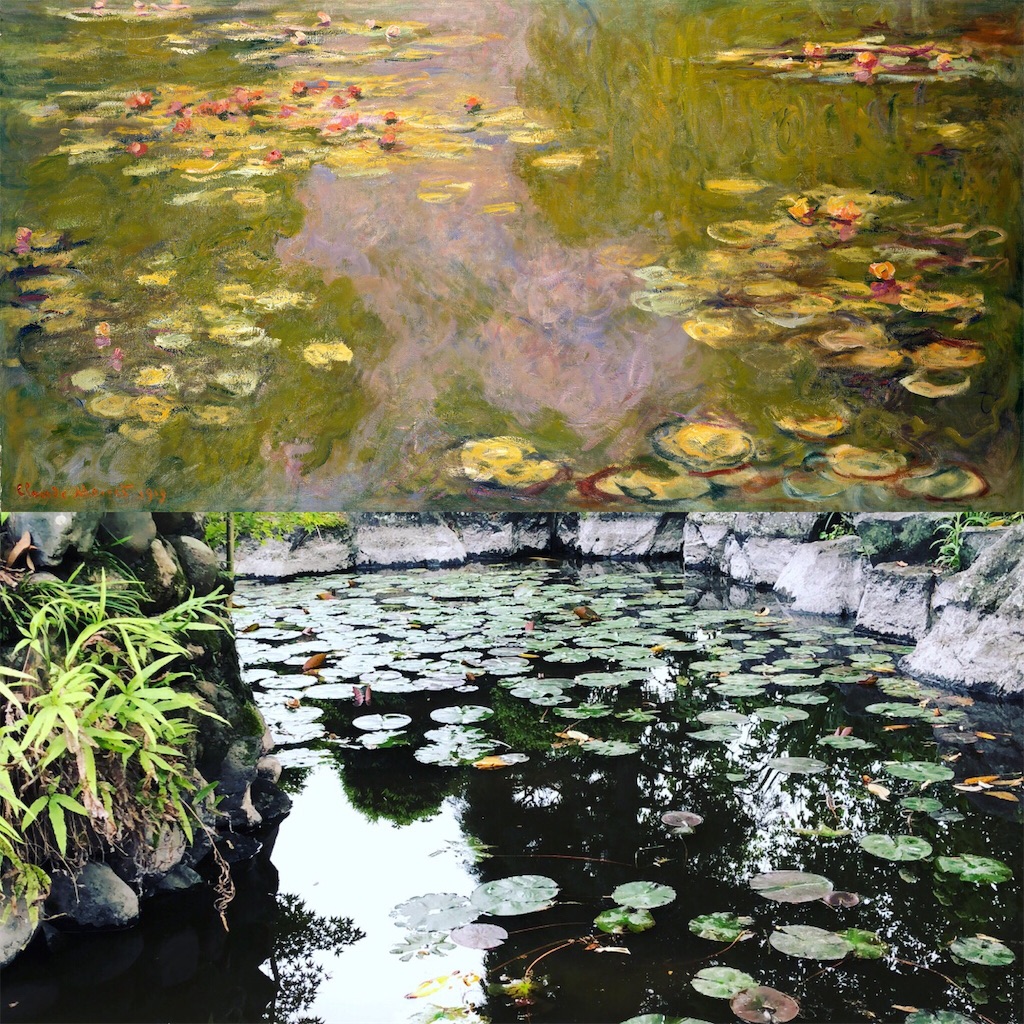

ローグワンに窺える戦国武将 Samurai Traces in Rogue One

「フォースの覚醒」が公開された2015年はある意味で「スターウォーズの年」でもあって、世界中にそのワクワク感が繰り広げられました。この日本でも多岐に渡るスターウォーズ関連の企画が展開され、その一つは日刊スポーツが手掛けた「スターウォーズ新聞」でした。日本の独特のスポーツ新聞の形式を用いて、新作に関する情報を4号に渡って発信しました。2016年のローグワンの公開の前に日刊がその新聞を復刊して、数多くの興味深い記事も掲載しました。その記事の中で特に目に留まったのはローグワンのキャラクターを戦国武将に例えるものでした。完全に一致しないものもありますが、意外にも納得できる類似点が多いです。
The world was seized by a wave of excitement ahead of the release of The Force Awakens in 2015. In a certain respect, 2015 was “the Star Wars year.” Here in Japan, there were a number of Star Wars-related events and programs, one of which was the Star Wars Newspaper put out by the Japanese sports newspaper company Nikkan Sports. Four issues of the paper were released that year, with each issue introducing information about the new film through Japan’s own unique format for sports news periodicals. Nikkan Sports brought the paper back for a special issue in 2016 ahead of the release of Rogue One, and it featured a number of interesting articles. One that really caught my attention was a piece that paired Rogue One characters with famous warriors/warlords from the Sengoku (Warring States) Period that shared similar personality traits. Although some of the comparisons are a little off, it is interesting to see how many similarities there actually are. Here is my translation of the article.
帝国軍
Galactic Empire

ダースベイダー:徳川家康
Darth Vader→Tokugawa Ieyasu
強大な帝国軍の司令官として銀河に名を轟かすシスの暗黒卿。並外れたフォースを持つ若きジェダイ騎士だったが、ダークサイドに落ち、皇帝の右腕になった。
Dark Sith Lord and Supreme Commander of the Grand Imperial Army known all throughout the Galaxy. Once a young Jedi Knight with exceptional Force abilities who fell to the Dark Side and became the Emperor's enforcer.
家康的ポイント=フォース
Ieyasu trait: The Force
信長、秀吉の下で力を蓄えた虎視耽々。天下統一までの「最強のNo. 2」的立ち位置は家康ベイダー共通。人の弱点を見抜き人心掌握。洞察力はまさに「フォース」。
Ieyasu was a great warlord who built up his power under Oda Nobunaga and Toyotomi Hideyoshi, waiting for his opportunity to seize control. The ultimate "No. 2" who ultimately unified Japan, Ieyasu's standing very much resembles that of Vader. His ability to see through people and identify their weaknesses resembles the perception one gains through the Force.

オーソンクレニック:本田正信
Orson Krennic→Honda Masanobu
デストルーパー部隊を率いる帝国軍の高階級将校。ダースベイダーの忠誠を装いながらも、陰で皇帝に取り入ろうと企んでいるらしい。
High ranking Imperial officer with his own squadron of Death Troopers. Feigns loyalty to Vader while attempting to scheme his way into the Emperor's graces.
正信的ポイント:嫌われ者
Masanobu trait: Loathed by all
家康の参謀として知略を尽くし県政をふるった。家康を裏切って敵対した過去があり仲間内から「腸(はらわた)の腐ったやつ」と嫌われた。嫌われ度はクレニック並みかも。
Staff officer to Ieyasu who used his intellect and wit to wield influence. Comrades who had once betrayed and fought against Ieyasu in the past claimed he was "rotten to the core." He may have been despised just as much as Krennic.
反乱軍
Rebel Alliance

ジンアーソ:真田幸村
Jyn Erso→ Sanada Yukimura
本作のヒロイン。有名な科学者の娘だが15歳の頃から1人で暮らす孤独なアウトロー。過去に犯した罪を帳消しにすべく、反乱軍に加入した。97.6%生還不可能なデススター設計図強奪計画に命を懸ける。
The heroine of this particular Star Wars tale. The daughter of a renowned scientist, she's a bit of an outlaw who has been on her own since the age of 15. Joins the Rebellion because she believes she needs to atone for her past sins. Ready to stake her life on a mission with only a 2.4% chance of success to steal the Death Star plans.
幸村的ポイント=強大な敵への超困難ミッション
Yukimura trait: Proclivity to tackle nearly impossible missions against imposing foes
九度山での孤独な幽閉生活から立ち上がり、大坂の陣で総数20万余徳川軍に挑んだ幸村。「何もかもなくしたゼロの状態→強大過ぎる敵に不可能に近い命掛懸けの戦い」という熱い運命がジンと重なる。「有名な父」という設定も似ている。
Yukimura began his life in solitary confinement on Mt. Kudo, and then went out with a bang in 1615 when he rose against Ieyasu and his grand army of 200,000 strong during the Osaka Castle summer campaign. Yukimura lost everything countless times in his life, yet always rose back up and gave his all to take on seemingly impossible odds. Jin's own life journey mirrors Yukimura's path and experience. Both of them also share the distinction of having a famous father.

キャシアンアンド―:直江兼続
Cassian Andor→Naoe Kanetsugu
ジンのお目付け役に任命され行動を共にし支える反乱軍の将校。実戦経験、情報戦ともに秀でるリーダー。自分でプログラミングしたK-2SOとは強い絆で結ばれている。
Rebel officer tasked with keeping an eye on Jyn and supporting their mission to find Galen. A true leader seasoned in combat and intelligence activities. Enjoys a tight bond with K-2SO, the Imperial droid he re-programmed.
兼続的ポイント=参謀
Kanetsugu trait: Strategist
上杉景勝を生涯にわたり支えた。外交を得意としあ資質も情報戦に秀でるキャシアンと重なる。石田光成と気脈を通じたと言われK-2SOとの関係に似ていなくもない。
Kanetsugu devoted his entire life to being the staunch rock for his lord Uesugi Kagekatsu. His outstanding acumen in diplomacy and counter-intelligence resemble those of Cassian. His rapport with Ishida Mitsunari also brings to mind the relationship Cassian shares with K-2SO.

K-2SO: 石田光成
K-2SO→Ishida Mitsunari
ジンたちに同行する警備ドロイド。帝国軍の監視ロボットだったかキャシアンが再プログラミング。瞬時に状況分析。自信家で独善的。C-3POと逆で人にかしずかない。
Security droid that accompanies Jyn and her "rogues" on their mission. Once a surveillance droid, he has been reprogrammed by Cassian to fight for the "good" guys. Able to analyze any situation nearly instantaneously, but a bit full of himself and self-righteous. The polar opposite to C-3PO, he doesn't wait on people.
光成的ポイント:分析力
Mitsunari trait: Analytical prowess
状況分析に優れた官僚として、秀吉政権を支えた光成。上にも下にも傲慢な態度をとったと言われ、人にかしずかない性格はK-2SOに似ているかも。
Mitsunari applied his superb ability to analyze any situation to support Toyotomi Hideyoshi's rule over Japan. Both his superiors and subordinates reportedly viewed him as haughty, and he was never one to wait on or cozy up to people. That seems to describe K-2SO to a "T".

ボーディールック:雑賀孫市
Bodhi Rook→Saika Magoichi
ある時は帝国軍の運び屋。ある時は反乱軍のエースパイロット。帝国軍のやり方に疑問を覚え反乱軍に加入。飛行技術は誰にも負けない。ひとたび操縦桿を握ればヒーローに。
Imperial cargo pilot one day, ace Rebel pilot the next. Decided to cast his lot with the Rebellion after doubting the methods and intentions of the Empire. Piloting abilities are second to none, transforming him into a hero the second he takes hold of the controls.
孫市的ポイント:芸
Magoichi trait: True specialist
無敵を誇った鉄砲隊を束ねる。報酬次第でどんな大名にも雇われるフットワーク。鉄砲という「一芸」を武器に信長を苦しめ、権力に屈しなかった。ボーディーと重なる。
Magoichi led a band of nearly invincible musketeers, willing to ply their trade for whichever warlord was willing to pay them the right price. A persistent thorn in Nobunaga's side with their deadly skill behind the trigger, never surrendering to any form of authority. Bodhi's character brings to mind these characteristics.

チアルートイムウェ:加藤清正
Chirrut Imwe→Kato Kiyomasa
ジェダイがほろんでしまった時代に、フォースの力を信じるスピリチュアルな盲目の僧侶。強じんな精神力で棒術の達人になった。明友ベイズと常に一緒にいる。
Fervent blind monk who continues to believe in the Force despite living in a post-Jedi galaxy. Drew upon his incredible spiritual power to become a master wielder of the bow staff. Always travels together with this trusted friend and ally Baze.
清正的ポイント=達人
Kiyomasa trait: Master warrior
秀吉豊臣下最強の武将。「七本槍」「虎退治 (文禄、慶長の役)」などで知られる槍の達人。築城の達人としても知られる。熱心な法華経信者でスピリチュアルなところもチアルートと共通する。
Kiyomasa was one of the most accomplished warriors to serve under Toyotomi Hideyoshi. One of the renowned "seven spearmen" and fierce tiger slayer (during the invasions of Korea in the 1590s). In addition to his skills in combat, he was also an expert castle architect. His fervent devotion and practice of the Lotus Sutra (Buddhism) reveals a devout spiritualism much akin to Chirrut's own faith in the Force.
注釈:初めてチアルートが一心に唱える「フォースは我と共にあり、我はフォースと共にある」と聞いたとき、すぐに思い浮かんだのは戦国時代の戦場で敵に襲い掛かるときにある仏教宗派の宗徒が唱えた念仏のことでした。それは浄土真宗から派生した一向宗という宗派であり、その宗派の総本山は現在の大阪府にあった本願寺でした。「南無阿弥陀仏」と唱え、仏に身を任せれば、戦死しても極楽土へと成仏すると信じていました。その念仏を意訳すると「南無阿弥陀は我の救済」という意味になります。この念仏の唱えはあまりにも滑らかであることから、繰り返して唱えると集中力を高めると同時に不安を一蹴する効果もあるという説もあります。その意味でこの南無阿弥陀仏の念仏はチアルートが唱える「フォースの祈り」と見事に連想するとも言えます。「南無阿弥陀から見ると皆は平等であり(無階級)」という宗教思想を布教する一向宗は、織田信長を始め当時の戦国大名がこの教団を強大を脅威と見ていました。
**Footnote: Chirrut's chanting of "I am one with the Force, and the Force is with me" instantly reminded me of a Buddhist chant from one sect that was commonly chanted by followers as they went into battle during this period. They were an offshoot of the Josdo-shin (True Pure Land) Buddhism, and their head temple was at Honganji (in present day Osaka). They believed that chanting "Namu Amida Butsu" would enable them to enter paradise should they perish in battle. One way to interpret this chant is "I take refuge in Amida Buddha". Some claim that the smooth manner in which the chant rolls off the tongue helps to remove anxiety and focus your concentration, so in that respect it is fitting that Chirrut mutters his own chant when entering the fray. Incidentally, rulers such as Nobunaga viewed this sect as extremely dangerous because they proclaimed all people were equal in the eyes of Amida Butsu (Amidtha Buddha), or literally "none above, none below".

ベイズマルバス:福島正則
Baze Malbus→Fukushima Masanori
相模で親友のチアルートのためなら命を惜しまない重装備兵士。後先を顧みない無鉄砲な性格。チアルートと対照的にスピリチュアルな力より巨大ブラスターを信じる。
Heavy weapons expert willing to lay down his life for his friend and sidekick Chirrut. A reckless character who doesn't think twice about the consequences of his actions. Not the spiritualist Chirrut is, he places his faith in the massive blaster he wields to deadly effect.
正則的ポイント=盟友
Masanori trait: Devoted ally
秀吉の小姓時代から加藤清正と仲が良く共に「賤ケ岳(しずがたけ)の七本槍」に数えられた。ベイズとチアルートの盟友関係と重なる。「無鉄砲な乱暴者」な逸話多数。これもベイズ的。
Masanori was another one of the "seven spearmen" under Hideyoshi at the Battle of Shizugatake against Tokugawa Ieyasu. He was close friends with Kato Kiyomasa, and both of them served Hideyoshi from a young age, displaying a strong bond that Baze and Chirrut mirror in the film. A reckless man that loved a fight, much like Baze in Rogue One.

ソウゲレラ:後藤又兵衛
Saw Gerrera→Goto Matabei
帝国軍の圧政の中でパルチザンを率いて権力に対抗する。その戦いぶりは過激で向こう見ず。あまりに苛烈なため見方からも恐れられる。
A leader of a partisan group that fights back against the oppressive rule and authority of the Empire. A rather extreme fighter that is sometimes more reckless than he is brave. His proclivity to go to the edge has made him feared even among allies.
又兵衛的ポイント=苛烈
Matabei trait: Hard core
戦国時代きっての猛将。大坂の陣で劣勢の豊臣方につき牢人達を率いて徳川勢に対抗。大軍勢に囲まれ壮絶に打ち死に。反権力と苛烈さがソウゲレラを想起。
Fierce warrior that lived through the thick of the Sengoku Period. Cast his lot with the outnumbered Toyotomi forces in the Osaka campaigns (1614-1615) and led a band of ronin (masterless samurai) against the Tokugawa army. Met a heroic death surrounded by enemy forces. His hard-core, borderline extreme resistance to authority conjures up images of Saw Gerrera.